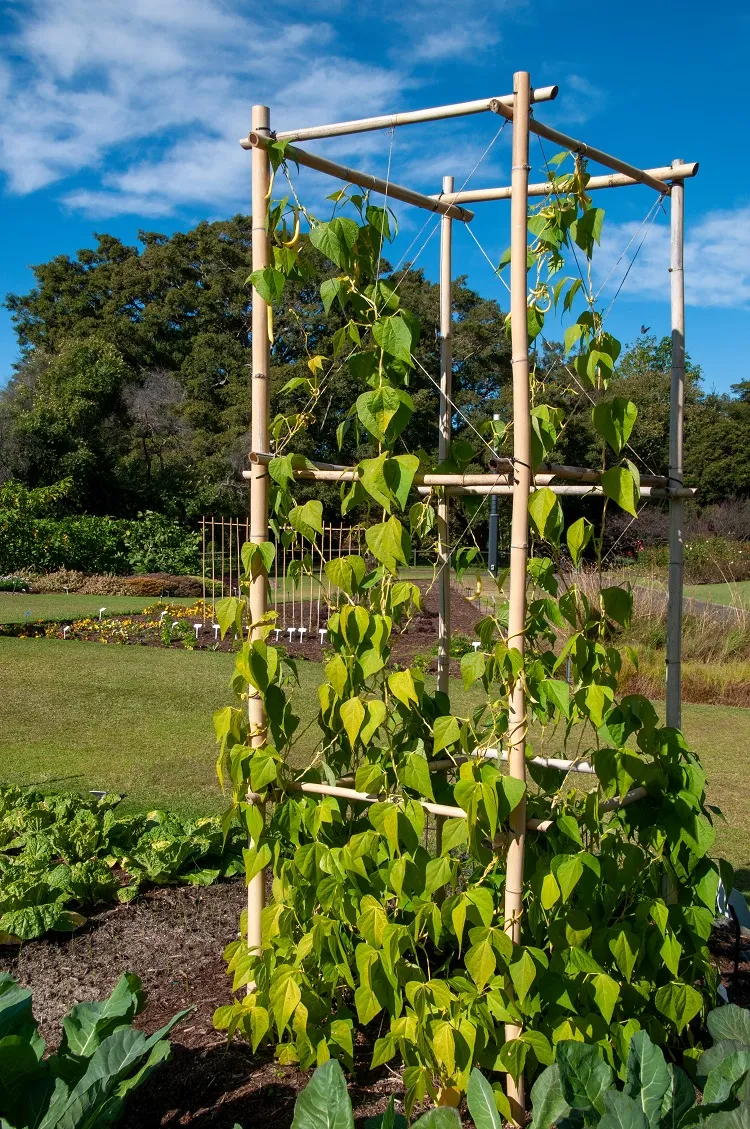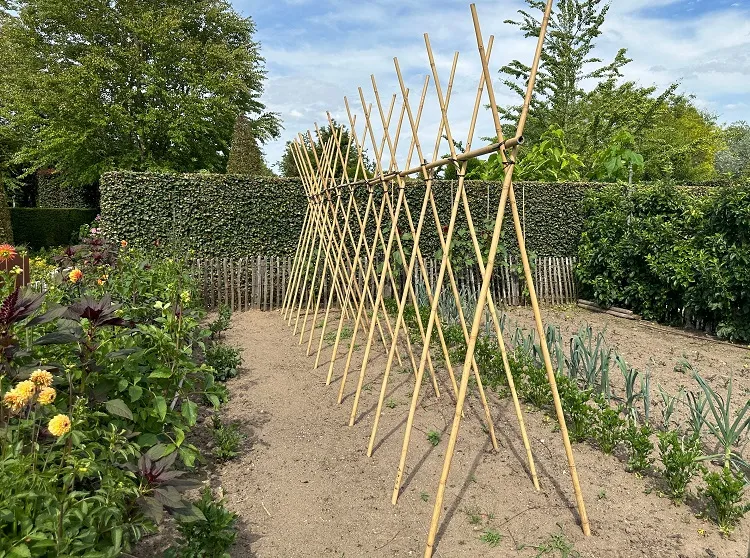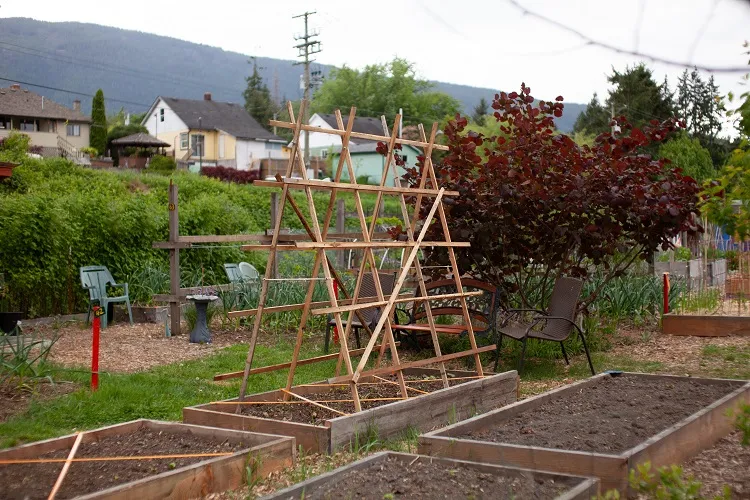How to grow creeping plants in a small garden? What could be used as a solution to this problem? How to make a garden climbing frame for plants?
Sometimes you want to grow climbing plants in your garden, and it just happens so that you lack the space to leave them to spread freely. In such cases, a climbing frame can come in quite handy, as it wouldn’t take up too much room, it will allow your plants to grow as they usually would and such a construction can also add aesthetic appeal to your whole garden! Do you want to learn how to make a garden climbing frame for plants of your own? Read on for a simple DIY project that absolutely anyone can build!
How to Make a Garden Climbing Frame for Plants? 7 Simple Steps
Deavita.net’s garden experts are providing you today with an easy guide on how to make a garden climbing frame for plants! The design of the frame itself can be completely up to you, we are just here to give you advice on the necessary tools and instructions for the project. Good luck!
What you’ll need:
- Wooden stakes
- Metal rods
- Twine/wire
- Measuring tape
- Level
- Paint (optional)
How to Make a Garden Climbing Frame for Plants:
- Before you start to build your garden climbing frame, first it’s best to consider what types of plants are you planning on growing on it and the layout of your garden. Consider factors such as how long and wide you want your frame to be, the spacing between supports, and the overall aesthetic appeal you want to achieve to complement the rest of your garden.
- Make sure you choose durable materials for your construction that will withstand outdoor conditions and provide adequate support for your creeping plants. Wooden stakes or posts are a popular choice when it comes to building such a frame’s main supports. Metal rods can be used as crossbars for the plants to climb. The materials you use have to be naturally resistant to rot and decay, or have to be treated against such as they will be in direct contact with soil at all times.
- Use a measuring tape and level to mark the locations where you want to place your stakes or posts, and dig holes for them accordingly. Place the stakes in the holes and check with the level if they are straight and upright. Then fill the holes with soil and tamp it down firmly to secure the stakes in place.
- Once the main supports of the climbing frame are in place, it’s time to attach the crossbars horizontally between them. Use twine or wire to secure the crossbars to the stakes by wrapping them tightly around each intersection and tying them securely.
- For an even more stable garden climbing frame, run twine or wire horizontally along the length of the crossbars to create a grid-like pattern for the plants to climb. Remember to space the support lines evenly to accommodate the growth of your creeping plants and prevent overcrowding.
- To make your DIY climbing frame more aesthetically-appealing, paint or stain its wooden parts! This will also add a layer of protection against natural conditions. Some people also choose to add other decorative elements to the frame to blend in with their garden’s style, like finials or lattice panels. The choice is yours.
- Once your garden climbing frame has been build and the paint has dried, you can begin your planting! Make sure you train your creeping plants onto the frame as they grow by gently guiding them along the support lines to encourage upward growth. Also, don’t forget to regularly check the support lines to ensure that the construction is stable and that your plants are adequately supported.
Also read: How to Make an Easy DIY Bucket Garden? Step-by-Step Guide



